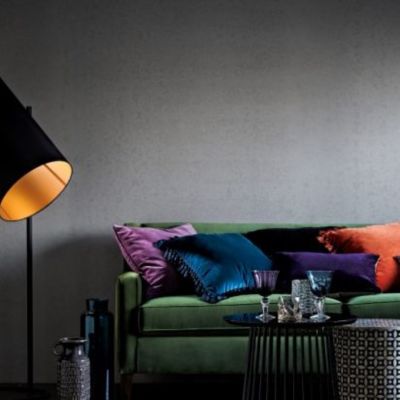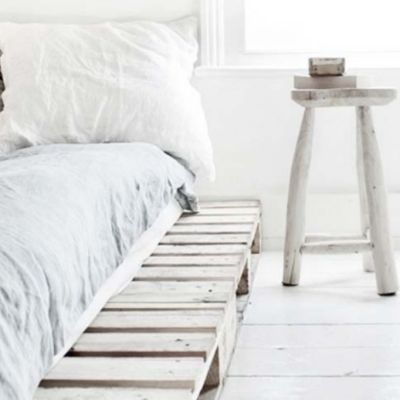Move over minimalism: Maximalism stages a comeback in interiors

After decades of being told to live in glass boxes with stark interiors, there’s hope for those who love colour, fabrics and fun. Lush, luxurious and comfortable decor is making a comeback.
Maximalist style – the polar opposite of minimalism – is one of the hot interior design trends for 2017, according to the Wall Street Journal.
Those who have been afraid to inject personality into their homes can breathe a sigh of relief as wallpaper, pattern, rich fabrics and technicolour rooms are back in vogue.
Before you rush out and pile 20 cushions on the sofa, roll out the rugs and step up the glitz factor, remember that the rich, inviting interiors of maximalism require a delicate skill to get the balance right.
Less is more, say the minimalists, who advocate sparse interiors, clean lines and neutral colours.
But less is a bore, according to the maximalists who champion complex styles, bold colours and pattern upon patterned fabrics.

Formal Lounge – Rose Bay House, Sydney, Australia by Greg Natale. Photo: Anson Smart
“Minimalist interiors became soulless,” admits Sydney designer Thomas Hamel. “As humans, we need things around us that convey who we are to the world; things that generate memories and make us feel comforted.”
Hamel, the Virginian-born designer who runs a large interior design practice and counts the rich and famous among his clients, is right on top of international trends.
“Maximalism gives people confidence to live and create interiors they love and to be surrounded by things they love.”
While Hamel feels the world has had enough of minimalism, he warns against going over the top in your home.

Sydney designer Thomas Hamel.
“To fill a room with stuff for the sake of filling the space will not work.”
While the designer has always been a fan of texture, pattern and colour, he likes to think of himself as a moderate.
“Maximalism is a chance for people to have interiors that convey their personality though I do think an edited eye is required.”
The problem with minimalism was that it only offered a visual experience and that was limited by lack of colour, explains architect Rob Mills. While his own beach house in Lorne in Victoria is pared back, it’s still luxurious.

Maximalism by Sydney designer Thomas Hamel.
“It’s the objects we choose to live with that make our lives a pleasure. It’s a sensory experience living in a good residence.”
The respected Melbourne architect, head of Rob Mills Architects and Interior Designers, a finalist in the World Interiors News Awards in London at the end of the month, says we shouldn’t discount minimalism because it encourages us to question what we don’t need and to discard the superfluous.
Maximalism is not an easy style to achieve, he warns. “You need real skills, a great sense of colour, texture, fabric and a rich training in what’s available. Then you need to be a truly great curator as well as a designer to bring it all together.”
The grand proportions and rich interiors of the Millswyn Apartments in South Yarra, which he is working on, embrace the maximalism style, he says.

David Hicks.
“People are yearning for the extraordinary, something individual, something they have not seen before,” says top designer David Hicks.
Hicks likes to think he treads a middle road between minimalism and maximalism.
“Maximalism’s a world that conjures a celebration of richness and excess, sensuality, luxury and fantasy.”
Hicks says maximalism involves using expensive materials and layering fabrics and patterns – “think Indian palaces and Versailles”.
In a recent project, the award-winning Melbourne designer, known for his ultra luxe style, channelled maximalism by using multiple marbles to create patterns, embedding brass in timber doors to evoke a sense of luxury and combining patterned Persian rugs with Moire wallpaper.
Of course, wallpaper is a huge trend, says the designer. Fabrics are also another way to inject maximalism into a room. Play around with cushions using different non-matching fabrics or try a custom-made rug in an amazing pattern, he advises.
The desire for warm comfortable interiors is driving the return to maximalism, believes well-known Sydney designer Greg Natale, who has always been a fan of opulent styles.
“It’s easier to do maximalism than minimalism because you can add and take away layers to get it right,” he says. “Minimalism can be very restricting because you’re holding yourself back.”
Layering is the secret to maximalism, says Natale. In his projects, he uses decorative ceilings, metallics such as brass and chrome and pendant or decorative light fittings. His work now involves more wallpaper than paint and he also likes carpets with pattern.
With maximalism you have to know when to stop to get the balance right whereas with minimalism you need to push yourself not to be boring, he says.
In a recent Rose Bay project in Sydney, the celebrated designer featured detailed ceilings, wallpaper and custom-made joinery to create a sophisticated room.
Textured wallpaper, colourful kitchens and luxurious fabrics are all part of an international push back towards maximalist interiors.
Of course, minimalism will always have its fans but the return of lush ornate interiors is a relief to those who want to luxuriate in a highly personalised room surrounded by layers of beautiful fabrics, art and objects.
Max it up: Five hot trends
Wild about wallpaper – think textured wallpaper rather than patterned prints.
Colourful kitchens – green and blue are hot shades right now.
Dress it up – layer with beautiful fabrics such as taffeta, velvet and silk.
Metallica magic – metallics including bronze, brass, rose gold add a richness to a room.
The marble effect – use grained and coloured marble to create an opulent look.
We thought you might like
States
Capital Cities
Capital Cities - Rentals
Popular Areas
Allhomes
More










